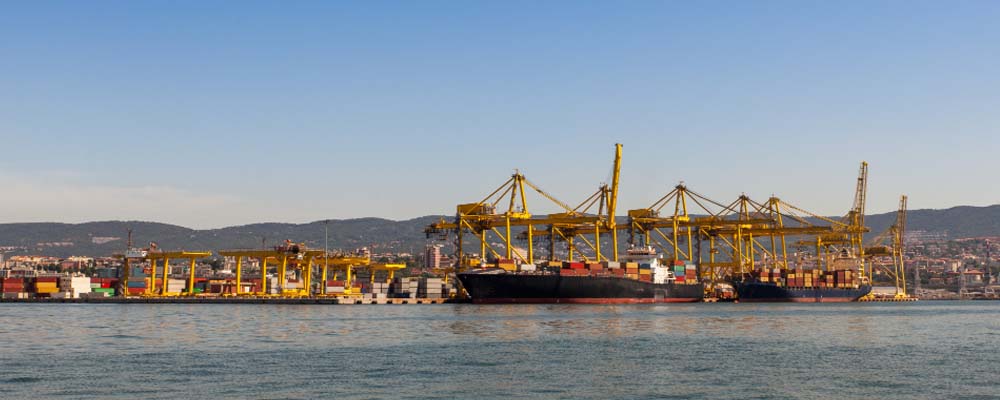
Navigating international logistics requires a deep understanding of key global ports, and for those operating in the Asia-Pacific region, the Port of Auckland in New Zealand is paramount. This bustling port is not only crucial for New Zealand’s economy but also plays a significant role in global trade. In this comprehensive guide, we will explore the essential features of the Port of Auckland, its economic and global impact, and practical tips for navigating it efficiently. Whether you’re a freight forwarder, logistics provider, importer or exporter, this information will enhance your operations and decision-making.
5 Key Features of the Port of Auckland
Strategic Location
The Port of Auckland is strategically located on the North Island, making it a pivotal entry point for goods entering New Zealand. Its proximity to major shipping routes in the Asia-Pacific region allows for efficient transportation and distribution of goods. This advantageous location reduces transit times and costs, providing significant benefits to logistics operations.
Advanced Infrastructure
One of the standout features of the Port of Auckland is its state-of-the-art infrastructure. The port boasts advanced cargo handling facilities, including modern cranes, automated container terminals, and extensive warehousing options. These facilities ensure quick turnaround times and minimal delays, which are crucial for maintaining the supply chain’s efficiency.
Comprehensive Services
The port offers a wide range of services tailored to meet the diverse needs of the logistics industry. From customs clearance and quarantine services to specialized cargo handling and storage, the Port of Auckland provides a one-stop solution for all logistic requirements. This comprehensive service offering simplifies the logistics process and enhances operational efficiency.
Sustainability Initiatives
In response to increasing environmental concerns, the Port of Auckland has implemented several sustainability initiatives. These include reducing carbon emissions, utilizing renewable energy sources, and promoting eco-friendly practices. By prioritizing sustainability, the port not only protects the environment but also aligns with global trends towards green logistics.
Connectivity and Accessibility
The port is well-connected to New Zealand’s major cities and industrial hubs through an extensive network of road and rail links. This connectivity ensures seamless transportation of goods from the port to their final destinations. Additionally, the port’s accessibility to international shipping lines enhances its role as a critical node in global supply chains.
 Economic and Global Impact
Economic and Global Impact
Boosting New Zealand’s Economy
The Port of Auckland is a major contributor to New Zealand’s economy. It handles a significant portion of the country’s imports and exports, facilitating trade worth billions of dollars annually. The port’s efficiency and capacity directly influence the nation’s economic growth and competitiveness in the global market.
Enhancing Trade Relations
By serving as a key trading hub, the Port of Auckland strengthens New Zealand’s trade relations with other countries. The port’s robust infrastructure and services attract international shipping lines and businesses, fostering stronger economic ties and opening up new business opportunities.
Supporting Local Industries
Local industries heavily rely on the Port of Auckland for importing raw materials and exporting finished goods. The port’s efficiency and reliability ensure that these industries can operate smoothly and meet their production targets. This support is crucial for the sustainability and growth of New Zealand’s manufacturing and production sectors.
Creating Employment Opportunities
The operations at the Port of Auckland generate thousands of jobs, both directly and indirectly. From dock workers and logistics managers to drivers and customs officers, the port provides employment across various sectors. This job creation contributes to the local economy and improves the livelihoods of many New Zealanders.
Driving Innovation
The Port of Auckland is at the forefront of technological innovation in logistics. By adopting advanced technologies like automation, AI, and IoT, the port continually improves its efficiency and service quality. These innovations not only benefit the port but also set new standards for the global logistics industry.
Navigating the Port of Auckland Efficiently
Understanding Port Protocols
Efficient navigation of the Port of Auckland begins with understanding its protocols and procedures. This includes familiarizing yourself with the port’s operational hours, documentation requirements, and customs regulations. Staying informed about these protocols can prevent delays and streamline your logistics operations.
Utilizing Digital Tools
Leveraging digital tools and platforms can significantly enhance your efficiency at the Port of Auckland. Many logistics providers use software solutions for tracking shipments, managing inventory, and coordinating with port authorities. These tools offer real-time insights and automate routine tasks, saving time and reducing errors.
Building Strong Relationships
Establishing strong relationships with port officials, service providers, and other stakeholders can facilitate smoother operations. Regular communication and collaboration can help resolve issues quickly and ensure that your shipments are handled with priority. Networking within the logistics community can also provide valuable insights and opportunities.
Planning for Peak Times
The Port of Auckland experiences peak times during certain periods of the year, such as the holiday season or during major events. Planning your shipments around these peak times can help avoid congestion and delays. Additionally, advance booking and early arrival can secure priority handling for your goods.
Investing in Training
Continuous training for your staff on the latest port procedures, technologies, and best practices can enhance your operations. Trained personnel can handle unexpected challenges more effectively and ensure compliance with port regulations. Investing in training programs can yield long-term benefits for your logistics operations.
Monitoring Market Trends
Staying updated on market trends and developments in the logistics industry can provide a competitive edge. This includes monitoring changes in shipping routes, advancements in port technology, and shifts in trade policies. Being proactive in adapting to these trends can improve your operational efficiency and customer satisfaction.
 Conclusion
Conclusion
The Port of Auckland is an indispensable asset for anyone involved in the logistics industry. Its strategic location, advanced infrastructure, comprehensive services, sustainability initiatives, and excellent connectivity make it a vital hub for global trade. By understanding its features, economic impact, and navigating it efficiently, you can maximize the benefits for your logistics operations.
If you’re looking to enhance your understanding and operations at the Port of Auckland, consider reaching out to industry experts or joining professional networks. Continuous learning and adaptation are key to staying competitive in the dynamic world of logistics.
Explore more about the Port of Auckland and integrate these insights into your strategy to harness its full potential. Your business’s future success may very well depend on it.




 Economic and Global Impact
Economic and Global Impact Conclusion
Conclusion



